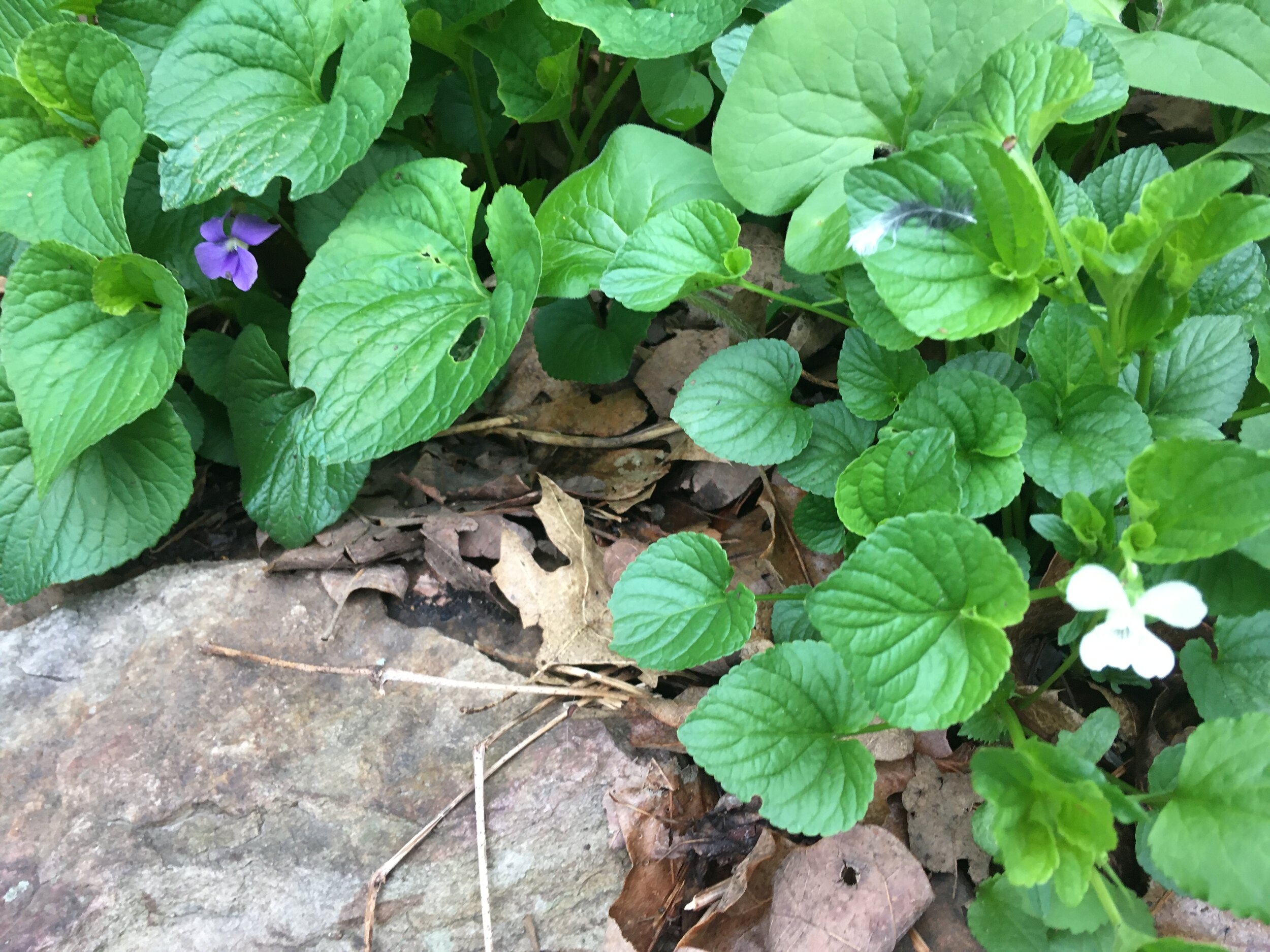Missouri's Wild Violets
/Wild Missouri violets in a hillside lawn. (Photo by Charlotte Ekker Wiggins)
Missouri’s Wild Violets
These lovely native Missouri spring wildflowers seem to be either hated or loved. I love them, all 20 Missouri species in the genus Viola. According to the Missouri Botanical Garden. leaf shape and hairiness, habitat, and other details are necessary clues to determining exact species.
My love of violets started with this ceramic container. (Photo by Charlotte Ekker Wiggins)
My love of violets started with a white ceramic container I now use to hold make up pencils. Maybe it started before then but this ceramic container is a favorite. I also didn’t know when I first starting collecting Missouri wild violets for my garden that there were 20 different species. Now that I do, the more the merrier!
Two different Missouri wild violets both growing along a path. (Photo by Charlotte Ekker Wiggins)
Violets are one of the few natives that offer a color close to blue. Blue is one of the most scarce colors in nature so having a plant that pretty much takes care of itself year to year is a favorite in my book.
Violets and Ajuga make a nice spring color combination. (Photo by Charlotte Ekker Wiggins)
In addition to growing in shade, Missouri wild violets also work well as border plants, helping to define my hillside garden paths.
And the flowers are edible, high in Vitamin C. Love to add them to a salad, they add an unexpected splash of delicious color.
Charlotte


















